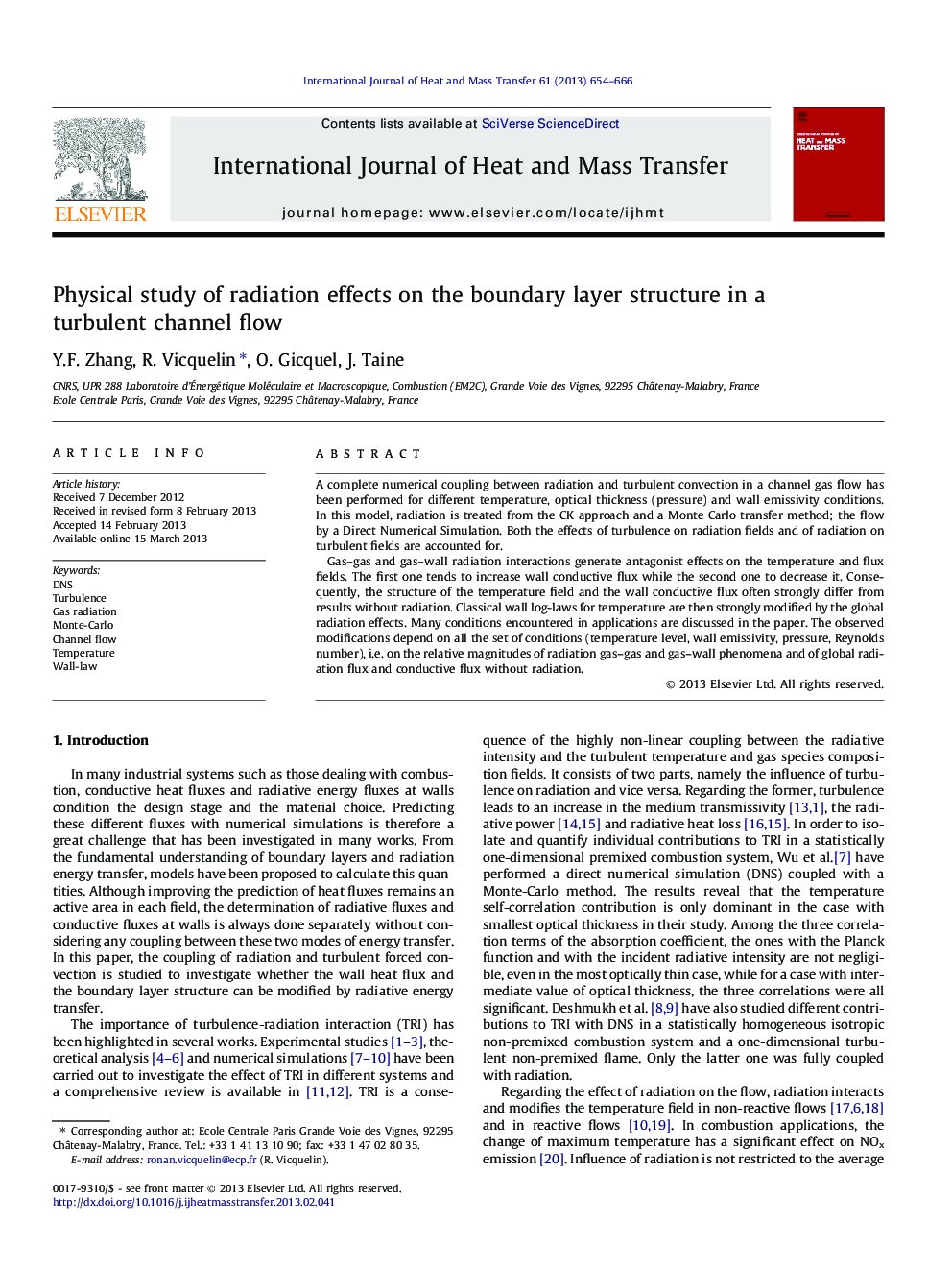| Article ID | Journal | Published Year | Pages | File Type |
|---|---|---|---|---|
| 7058951 | International Journal of Heat and Mass Transfer | 2013 | 13 Pages |
Abstract
Gas-gas and gas-wall radiation interactions generate antagonist effects on the temperature and flux fields. The first one tends to increase wall conductive flux while the second one to decrease it. Consequently, the structure of the temperature field and the wall conductive flux often strongly differ from results without radiation. Classical wall log-laws for temperature are then strongly modified by the global radiation effects. Many conditions encountered in applications are discussed in the paper. The observed modifications depend on all the set of conditions (temperature level, wall emissivity, pressure, Reynolds number), i.e. on the relative magnitudes of radiation gas-gas and gas-wall phenomena and of global radiation flux and conductive flux without radiation.
Related Topics
Physical Sciences and Engineering
Chemical Engineering
Fluid Flow and Transfer Processes
Authors
Y.F. Zhang, R. Vicquelin, O. Gicquel, J. Taine,
